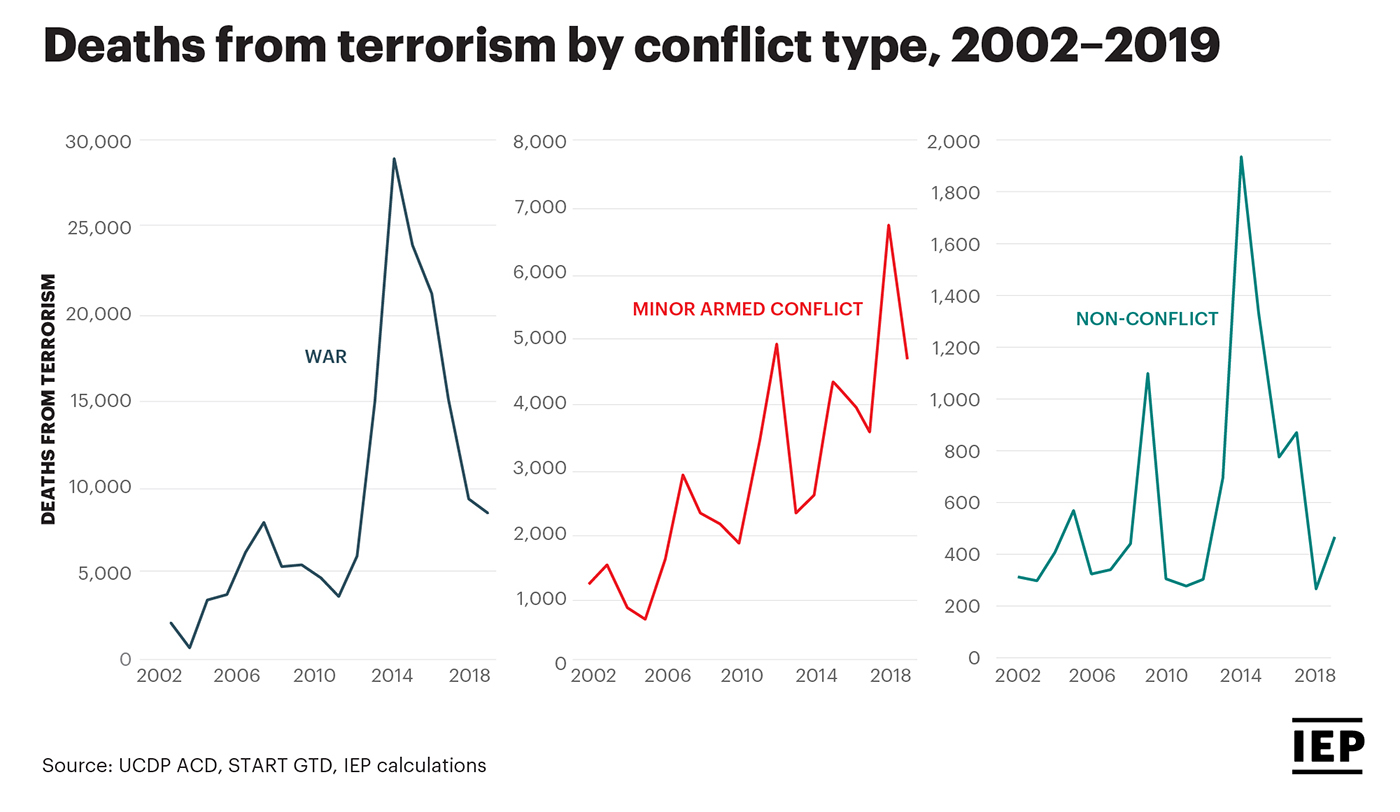The Global Terrorism Index 2020 report provides a comprehensive summary of the key global trends and patterns in terrorism over the last 50 years, placing a special emphasis on trends over the past decade.
This period corresponds with the rise and fall of the Islamic State of Iraq and the Levant (ISIL). For a brief look into the report’s findings, here are some of the biggest takeaways in six charts.
The Institute for Economics & Peace (IEP) has produced the Global Terrorism Index (GTI) for eight years using data from the Global Terrorism Database and other sources.
Globally deaths from terrorism fell for the fifth consecutive year in 2019 to 13,826, a 15% decrease from the year prior.
This chart shows the distribution of deaths in the countries with the largest number of terrorism deaths in 2019, compared to 2018.
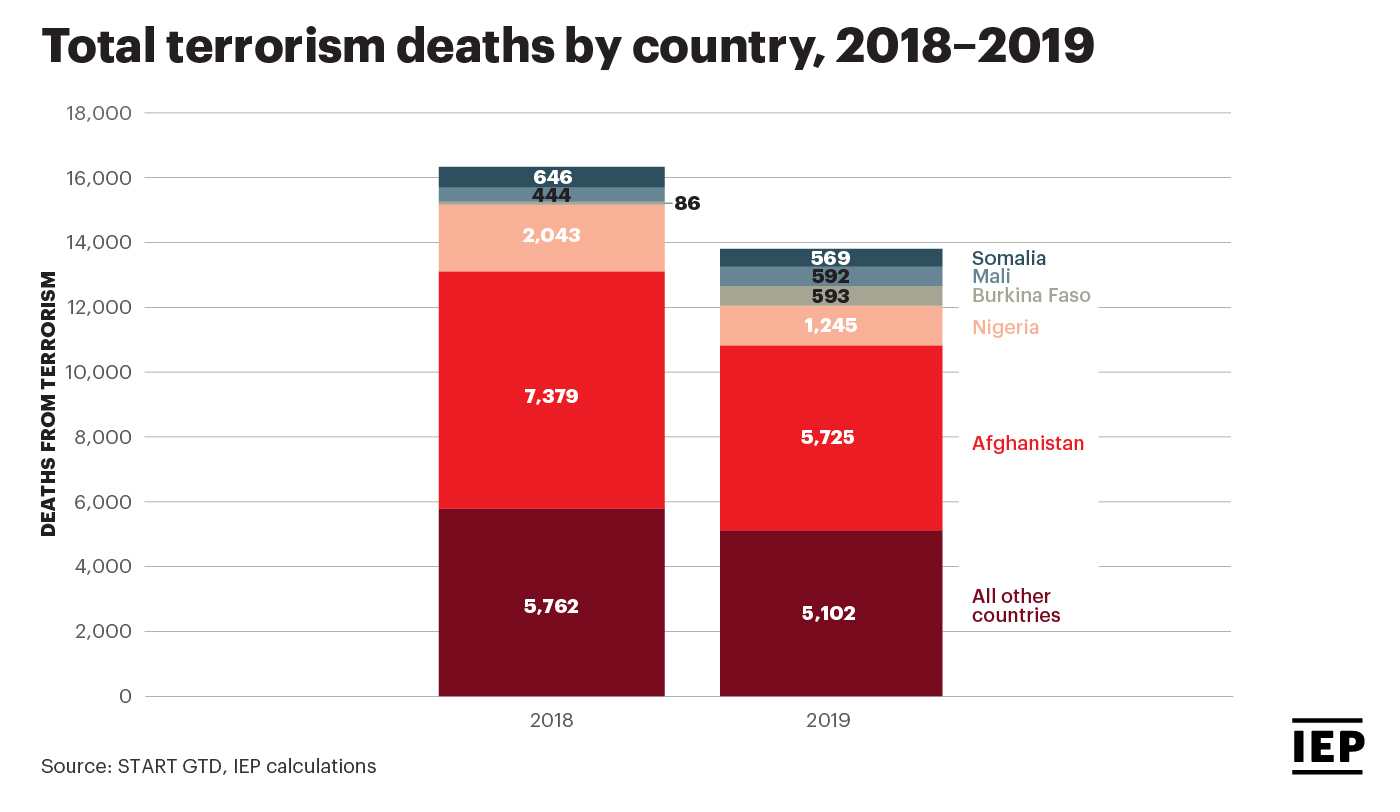
There were 63 countries in 2019 that recorded at least one death from a terrorist attack, and the largest increase in terrorism occurred in Burkina Faso – where deaths rose by 590%.
Other countries to deteriorate substantially are Sri Lanka, Mozambique, Mali and Niger. This chart highlights the countries with the largest increases in deaths from terrorism in 2019.
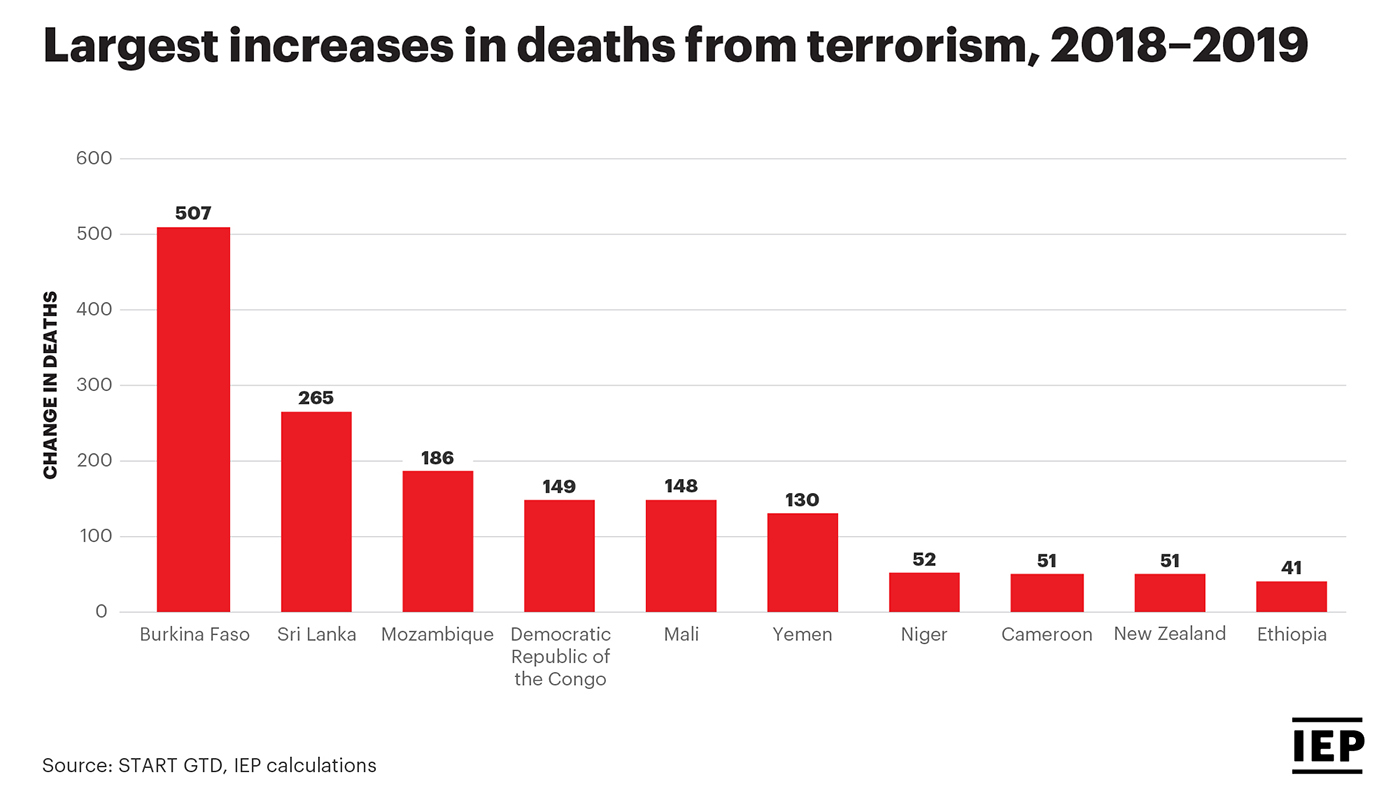
The global economic impact of terrorism was estimated to be US$26.4 billion in 2019; 25 per cent less than the prior year and the fifth consecutive year that it has declined.
This chart shows the trend in the economic impact of terrorism globally from 2000 to 2019. The impact of the September 11, 2001 terrorist attacks is highlighted separately.
The improvement over the last four years is largely driven by the declining level of terrorism in Iraq, Nigeria, Pakistan and Syria.
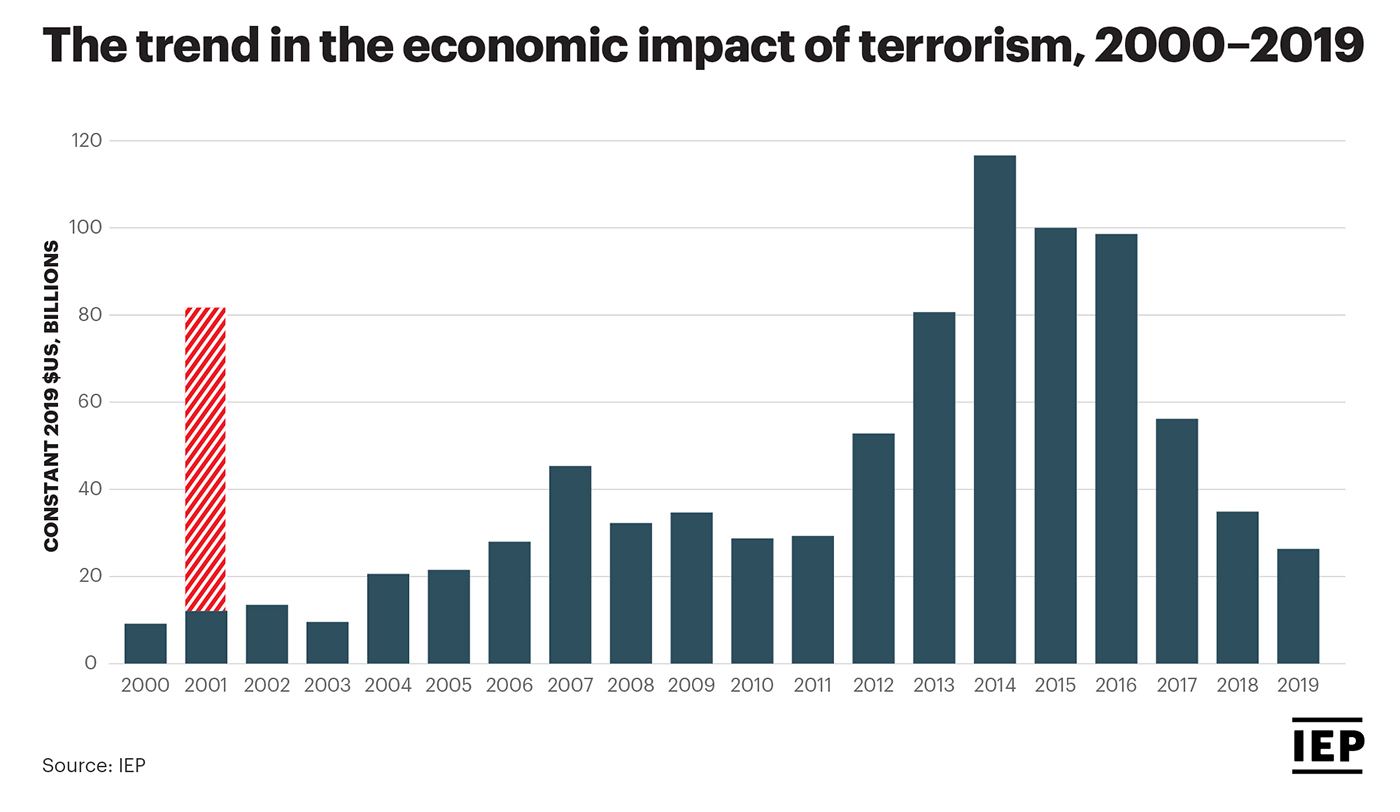
In North America, Western Europe and Oceania, far-right attacks have increased by 250 per cent since 2014 – they are higher now than at any time in the last 50 years.
This chart shows that there was just one recorded far-right terrorist attack in 2010, compared to 49 in 2019.
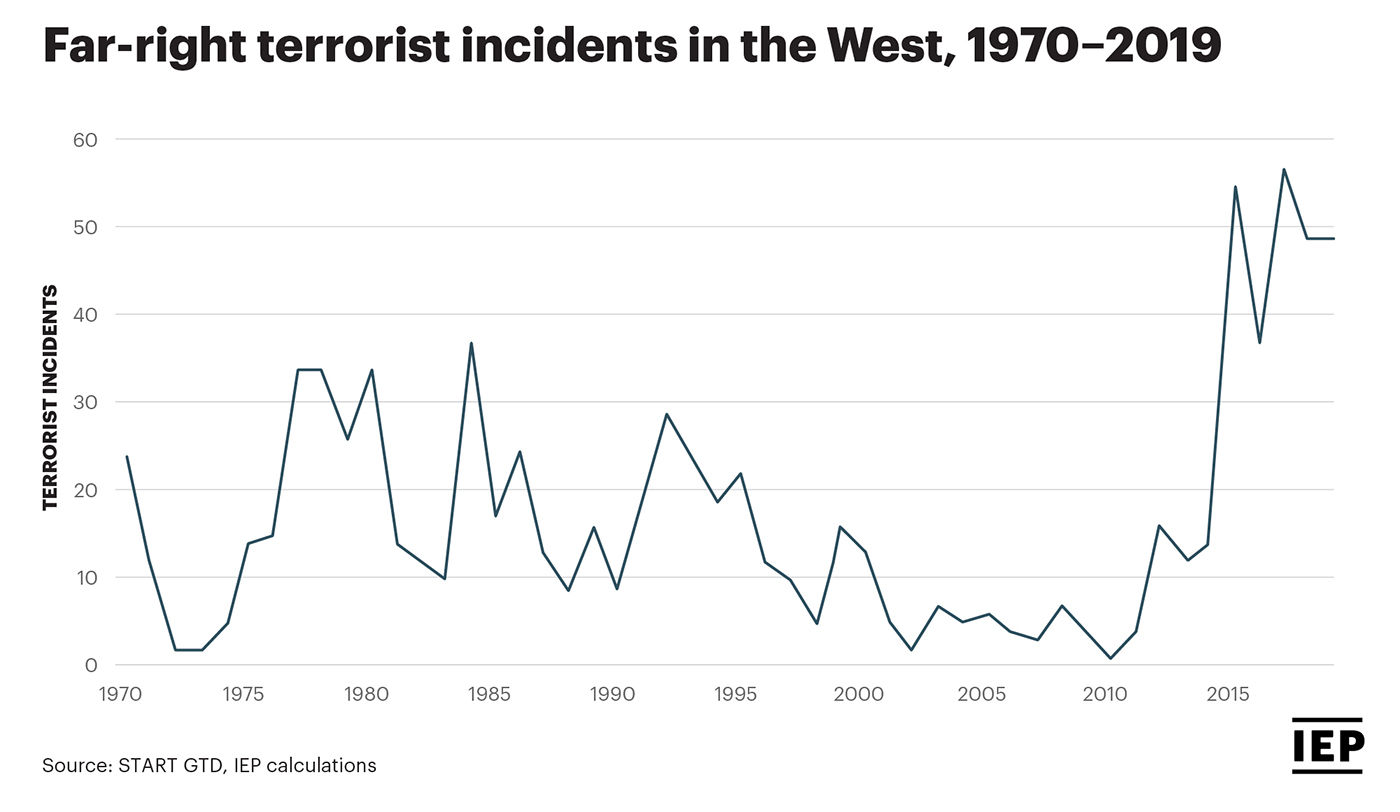
The emergence of new ISIL provinces and affiliates outside of Iraq and Syria has led to a regional shift, with ISIL-related terrorist activity now concentrated in South Asia and sub-Saharan Africa.
This chart shows the regional distribution of ISIL-related terrorism deaths since 2013.
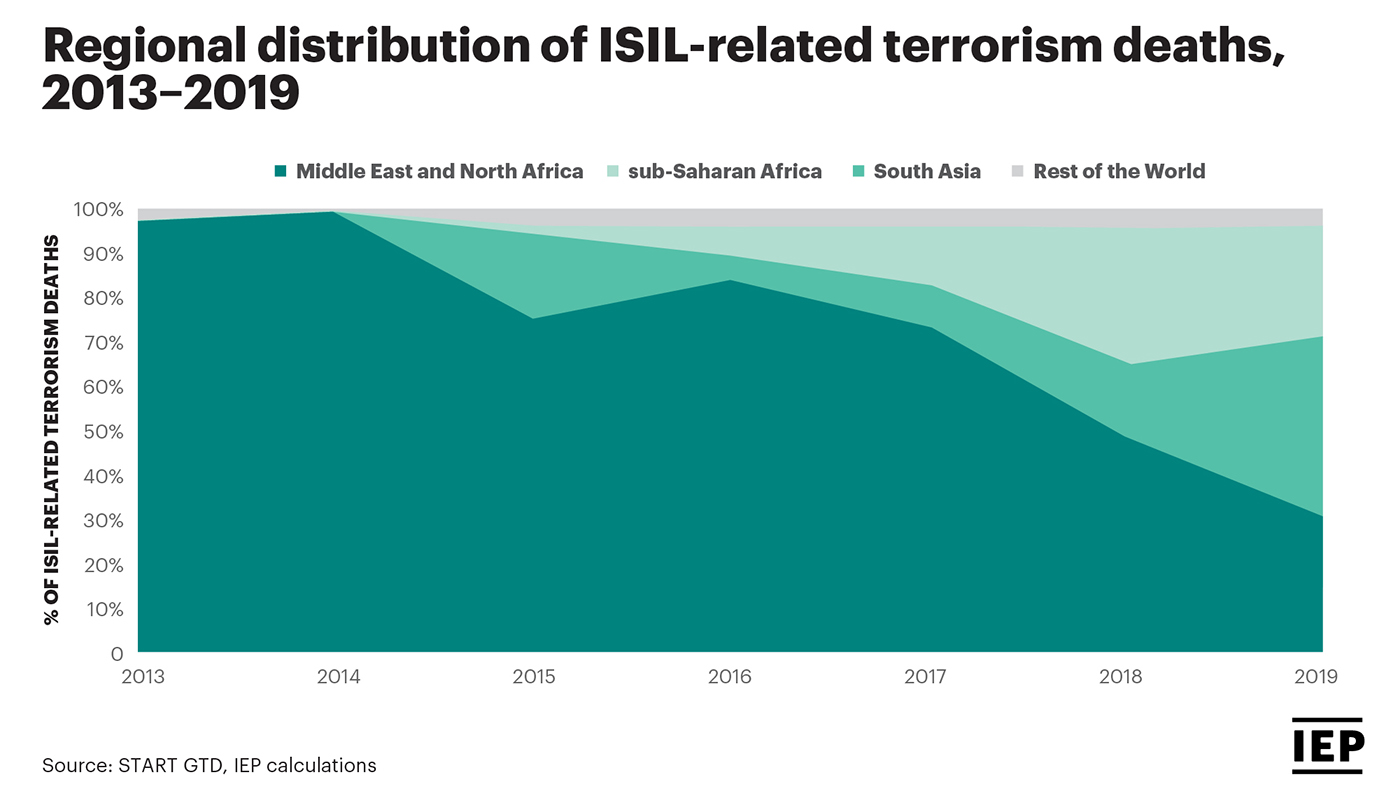
Conflict has been the primary driver of terrorism since 2002.
Every one of the ten countries most impacted by terrorism from 2002 to 2019 was involved in an armed conflict, meaning that they had at least one conflict that led to 25 or more battle-related deaths.
There were 236,422 deaths from terrorism between 2002 and 2019. Of these deaths, just under 95 per cent, or 224,582, occurred in countries involved in conflict.
This chart illustrates the trend in deaths from terrorism by conflict type.
